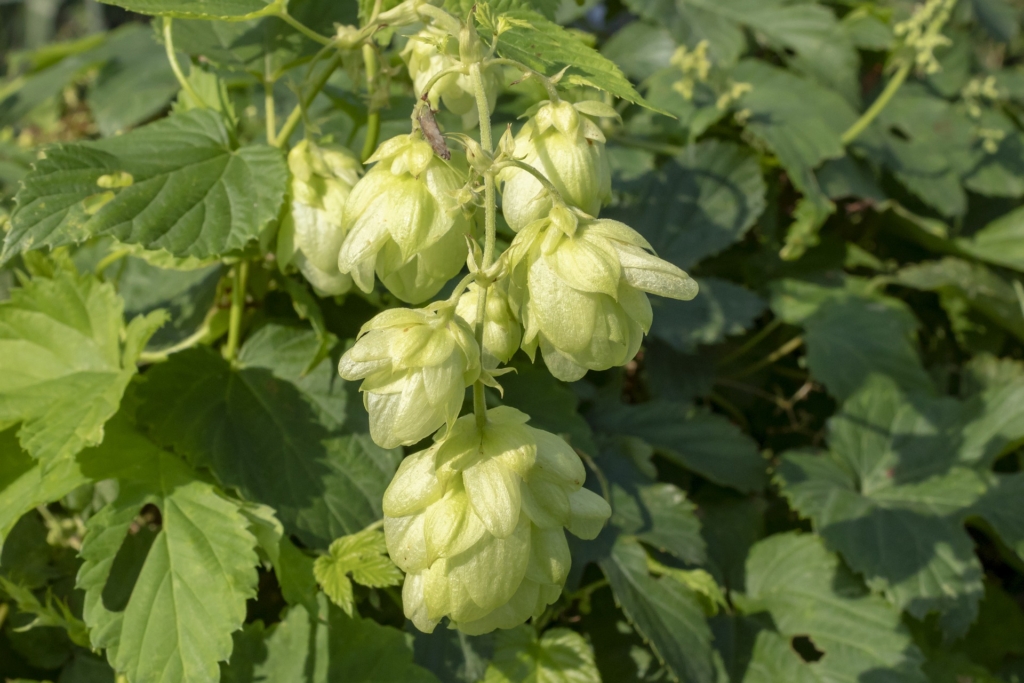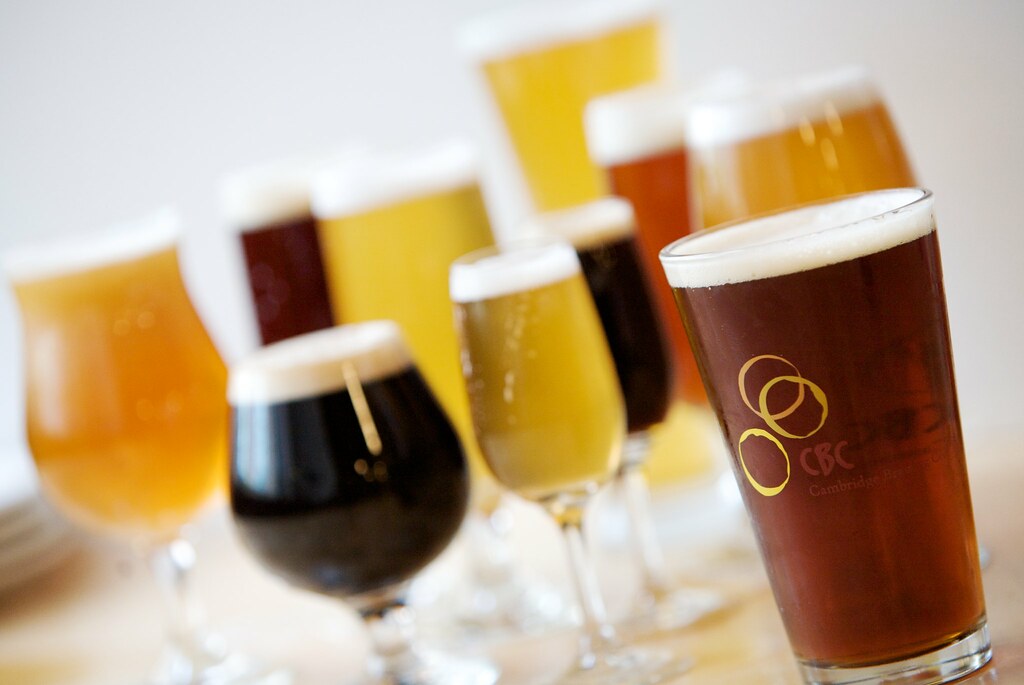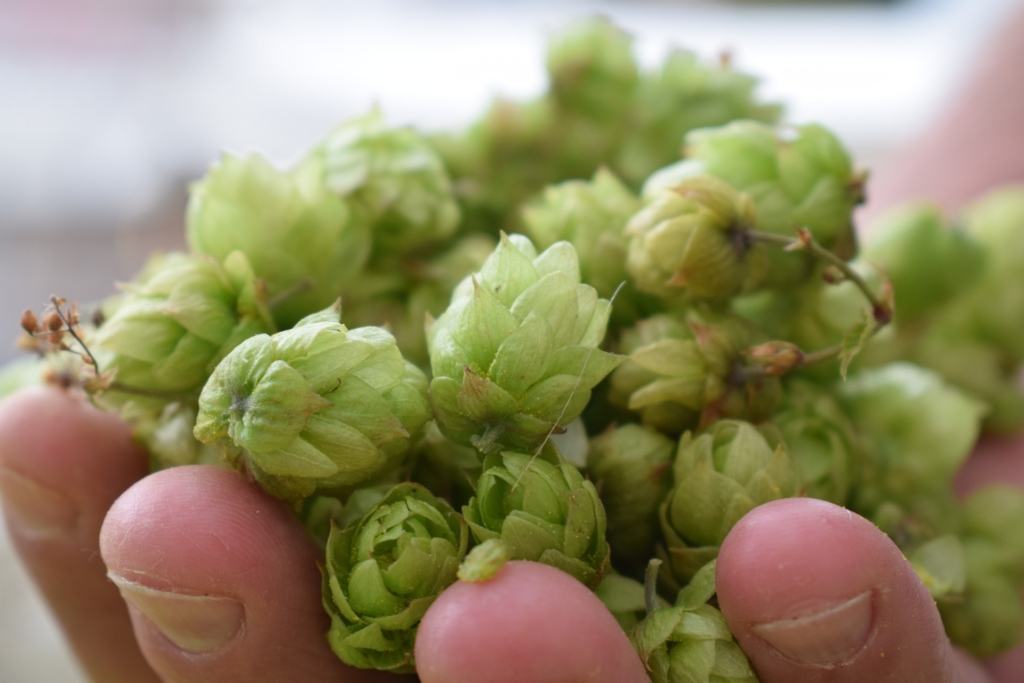Hops are much more than that bitterness we experience when we drink beer. Without hops, there would be no beer at all! We would be sipping on something called gruit, which doesn’t sound nearly as tasty as an IPA, pale ale, or lager.
What are Hops?
Hops are flowers. The pretty, green, pinecone-shaped flowers from the family Humulus lupulus, a family of climbing perennials. Inside each flower are tiny yellow pods, called lupulin, which are responsible for all the bitterness and aromas we experience in every pint of beer. Hops are global with a concentrated growth in Germany, Czechia, North America, and New Zealand. Hops prefer mild, semi-rainy climates, so it may come as no surprise that most of the hops grown in the United States come from the Pacific Northwest.

Like grapes, hops offer variety. Each variety has their own signature flavor and aroma.They are classified into two different categories: bitterness and aroma. Even though most hops can provide both bitterness and aroma, some are more adept at one category or the other. Cascade hops, a bittering hop, impart notes of grapefruit and pine while Simcoe, an aroma hop, is still moderately bitter, but aromatically superior with tropical and citrusy vibes. Further adding to the intricacies between hops and the taste and smell of the finished beer, there are over 80 (and counting) different commercial hop options available to brewers!
Hops and Beer
There are four major ingredients in beer: malt, yeast, water, and hops. Hops play a vital role in imparting aroma and flavor (as previously mentioned), but they also help stabilize the beer, keeping it fresher for longer and balancing the sweetness of the malt.

Hops contain acids and oils. The acids make up the bitter component and the essential oils make up the aroma component. Hops can be added throughout the brewing process but when they’re added depends on the brewer’s desired outcome. Bittering hops are added during the boiling process (the beginning), the aromatizing essential oils break down in high heat leaving just the bitter properties. Aroma hops are added in either the middle (once the wort/boil-stage has cooled slightly) or towards the end (once the mixture has significantly cooled, right before fermentation). The warmer temperatures release the aromas in the hops without the risk of destroying them in high-heat.
Feasting on Hops
Cooking with beer is not a “new” thing. But, now that we understand the considerable attributes hops contribute to beer, I think it’s safe to say we’re cooking with hops. So, for a hoppy and happy themed meal, we have three fantastic beer braised recipes for you to try; Beer Braised Chicken, Beer Braised Brats, and Beer Braised Shortribs.




